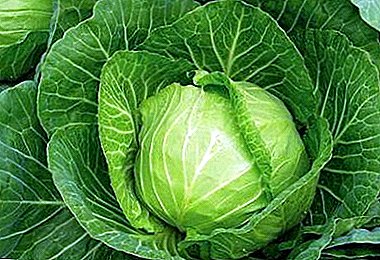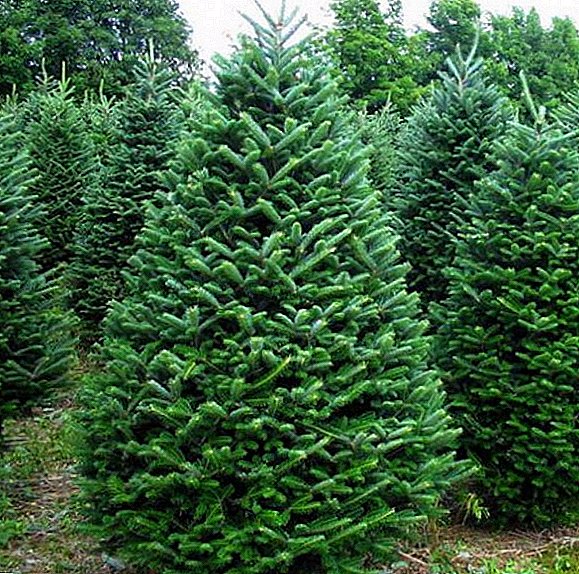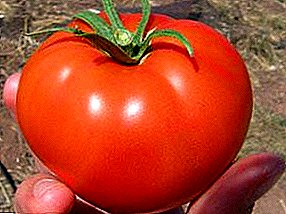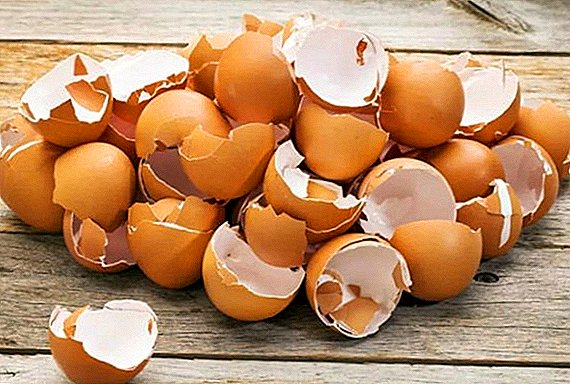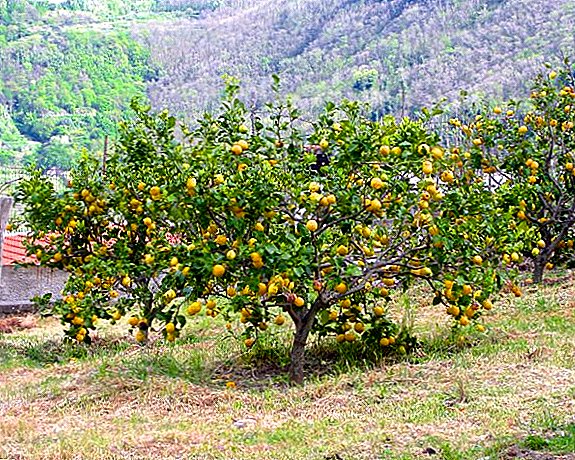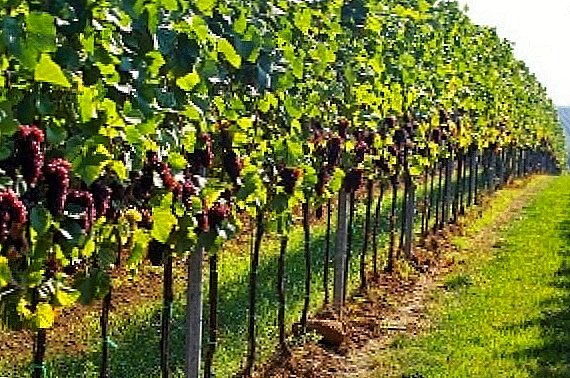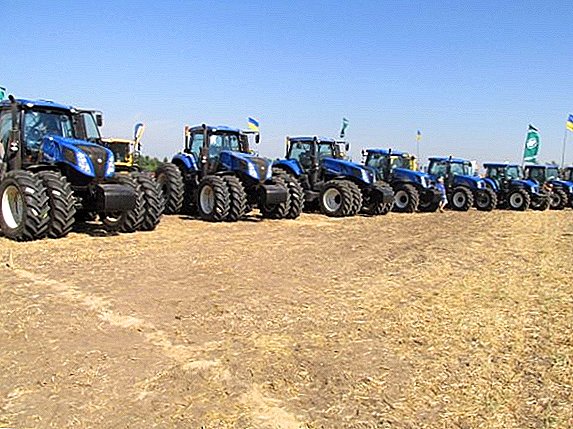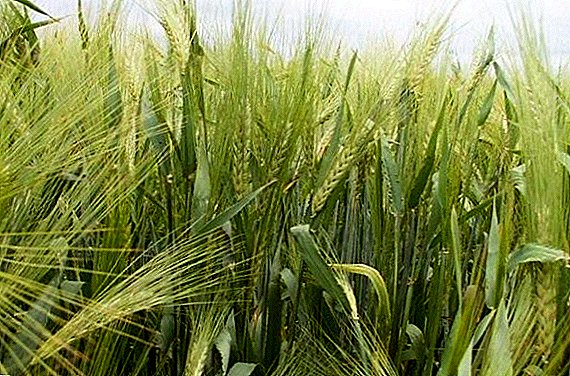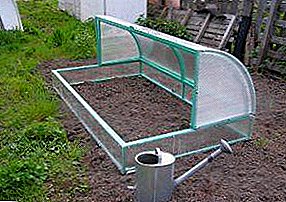
With the onset of the planting season every gardener seeks as best as possible get ready to the beginning of the landing of vegetable crops.
At the same time, sincere adherents of dacha farming try to grow their own seedlings on their own plot. For this at all not necessary to build greenhouse large sizes, and it is quite possible to manage the construction of a mini-greenhouse made of polycarbonate.
Design features
Polycarbonate mini greenhouses - compact and lightweight structuresin which you can grow different types of vegetables. Cellular Polycarbonate is an excellent option for covering greenhouses.
is he is a two-layer material with rows of cells located inside. Polycarbonate is much stronger than the film, much lighter than glass and it bends well, which makes it possible to give it an arch shape.
Such a structure can be successfully used on the private plots of private houses, it is also an indispensable option for gardeners-gardeners.
Advantages and disadvantages
 Like any design, a mini polycarbonate greenhouse has positive and negative sides. The benefits include the following indicators:
Like any design, a mini polycarbonate greenhouse has positive and negative sides. The benefits include the following indicators:
- easy and simple installation of the structure;
- high degree of thermal insulation;
- excellent level of light transparency (not less than 92%);
- protection of plants from ultraviolet rays, due to the presence of a special coating;
- the strength of the material (200 times greater than that of glass) and the ability to withstand shock loads;
- polycarbonate resistant to corrosive media and provides plants with good protection against acid precipitation;
- due to the low weight of the skin (16 times lighter than glass), the cost of supporting parts of the structure is reduced.
Design flaws polycarbonate:
- the ends of the coating should not be left open, as moisture and insects can penetrate into the cells, resulting in mold and mildew will occur and deterioration of operational properties of the material and the entire mini-greenhouse;
- It is necessary to clean the sheets from dust and dirt very carefully, using soft materials and neutral detergents;
- products containing salt, alkaline, ether and chloride components are prohibited;
- can't also apply abrasive paste and sharp objects, so as not to damage the coating that protects against ultraviolet radiation.
A photo
Variants of mini polycarbonate greenhouses (see photo below):





What can be grown?
Polycarbonate mini design is excellent suitable for growing different kinds seedlings, undersized crops and even a small amount of vegetables.
Tomatoes, peppers, cabbage - the seedlings of these plants can be grown in conditions of a reduced version of the greenhouse. You can also grow early-ripe radishes, onions, dill, eggplants, and beans.
We build with our own hands
There are several options. construction of a polycarbonate mini-greenhouse. Below are two possible models.
Recessed mini greenhouse
The optimum temperature for the construction of a polycarbonate greenhouse is 10-12 ° С, since at a temperature exceeding this indicator, sheets of material increase in volume, and further with a decrease in temperature, they will decrease.
Recessed version greenhouses have a simple design and able to keep warm wellthat stands out during the debate manure. The length of the structure can be any (within reason). As a rule, such structures are constructed no longer than three meters.
Width should be no more than 1.5 m. With a large width of a mini-greenhouse, it is inconvenient to work with it, whereas a small-width structure cannot accommodate the required amount of manure, as a result of which heating will be insufficient.
 The level of the recess depends on the conditions in which the structure will be used: for low temperatures will be optimal depth 80 cm, and when using the greenhouse during small cold weather 30 cm will be enough.
The level of the recess depends on the conditions in which the structure will be used: for low temperatures will be optimal depth 80 cm, and when using the greenhouse during small cold weather 30 cm will be enough.
The upper filling of the pit - soil (layer thickness 20 cm), the rest is filled with manure.
Polycarbonate construction is installed on a log frame, which is mounted in a circle of the pit. For framing use logs with a diameter of 100-150 mm.
To protect wood from exposure to moisture from hershould be treated with hot linseed oil or close along the perimeter with pieces of old linoleum. The roof of a mini-greenhouse may have a different design: arched, single or dual slope. Here we will focus on single-pitch construction.
The frame of the roof can be assembled from wooden bars. First, the lateral structural elements, which are parts of a triangular shape (the bottom of the parts must match the width of the pit).
Next, the finished "triangles" in the corners are fastened together by bars, the length of which is determined based on the length of the pit. The upper and lower bars should also be fastened together by 2-3 transverse rails.
The frame is ready. It remains to close it on all sides (except the bottom) with pieces of polycarbonate, securing them with self-tapping screws, and glue tape over the place where the sheets fit to the tree.
Flap cover in such a design not providedtherefore during construction the facility will need to be completely removed for a while.
Mobile mini greenhouse
This is a practical and economical variant of a compact greenhouse that retains heat no worse than a recessed design. This model can use at stabilized temperaturein the second half of the spring season. The mini-greenhouse equipped with wheels can be easily moved around the site if necessary.
For the manufacture of DIY polycarbonate greenhouses, will need:
- support frame;
- four-wheel device;
- plywood sheet for arranging the bottom;
- two bars with which the rafter legs will be fixed;
- polycarbonate;
- self-tapping screws.
 For the assembly of the support frame use a small thickness of the bars, which fasten the butt with the help of screws. Wheels can be attached to the legs. The side bars of the mini-greenhouse are strapping, to which the rafter legs are attached.
For the assembly of the support frame use a small thickness of the bars, which fasten the butt with the help of screws. Wheels can be attached to the legs. The side bars of the mini-greenhouse are strapping, to which the rafter legs are attached.
Above, a roof of a double-slope construction is assembled, which is assembled from frames equipped with polycarbonate, fixed with self-tapping screws.
From the ends construction it is necessary to equip hinged doorsso that you can air the greenhouse. The bottom of the structure is covered with foil and covered with manure and soil.
Mini greenhouses from polycarbonate - great alternative traditional glass options. The lightness and durability of the material, combined with the ease of assembly and installation during the construction of various models, induce to make a choice in favor of polycarbonate structures.


